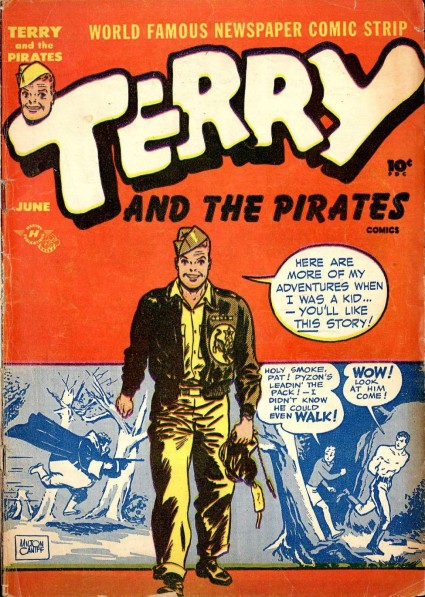Ethical aggregation: it’s simple
 The Columbia Journalism Review has an article up by editor-in-chief Cyndi Stivers begging for some way to tell the difference between ethical online content aggregators and unethical ones:
The Columbia Journalism Review has an article up by editor-in-chief Cyndi Stivers begging for some way to tell the difference between ethical online content aggregators and unethical ones:
I daresay many are grateful for the Twitter feeds, blogs, and newsletters that pull together links to what we need to know about—and we also appreciate smart commentary about them. But sometimes a writer (or website) goes too far, hiving off huge chunks of someone else’s work and presenting them with minimal added insight, most egregriously without a nod to the original source. During a skirmish last year with Arianna Huffington, The New York Times’s Bill Keller complained, “In Somalia, this would be called piracy. In the mediasphere, it is a respected business model.”
It then describes some of the various efforts underway to define “ethical aggregation,” such as those of the Council on Ethical Blogging and Aggregation, which has brought together a bunch of old- and new-media types to chew on this question, and Curator’s Code, which is trying to get people to add bizarre little “via” and “hat tip” symbols to aggregated content. (Good luck with that.)
I’m sure the question of what the dividing line is between ethical and unethical aggregation seems complicated to Ms. Stivers and the various worthies participating in the above-named projects, but to me — someone who aggregates content pretty frequently, on this blog as well as on on Facebook and on Twitter — it seems really, really simple.
The difference between ethical and unethical aggregation is this: ethical aggregation makes the reader want to click through to read the original story; unethical aggregation doesn’t.
An example. See that quote I inserted up there from Ms. Stivers’ op-ed? That’s an example of me aggregating CJR’s content. But I did so in a way that teases it; you get a taste, and if you want more, there’s a link you can click that will take you to the full story.
Now, imagine if, instead of limiting my quote to a couple of sentences, I just copied and pasted the entirety Ms. Stivers’ article here verbatim, maybe adding a couple of words of my own like “interesting” or “this is important.” And then I put a link you could click through to read the whole story. Who would ever bother clicking that link? Why click through to read something you already just read?
That’s the difference between ethical and unethical aggregation. Ethical aggregation increases reader demand for the original story; unethical aggregation decreases it.
Once you have this criterion in mind, distinguishing between the two types of aggregation becomes simple. Just look at a couple of examples. First, let’s look at Dave Winer’s linkblog. This is pure aggregation — a collection of links Dave thinks are interesting, with a sentence from each to give you a sense for what’s on the other end of the link. Is Dave creating any original content for this site? No — his contribution is just his editorial judgement as to which stories are interesting and which are not. But this is clearly an example of ethical aggregation nonetheless, because he’s not using the stories on the other end of those links to build traffic for himself, either. If you want the story you have to click through; that’s the definition of ethical.
Now, for the counter-example, consider the experience Ad Age Media Guy Simon Dumenco had of having his content aggregated by the Huffington Post:
HuffPo’s aggregation… consisted of basically a short but thorough paraphrasing/rewriting of the Ad Age post — using the same set-up (i.e., pointing out that Apple had the misfortune of presenting its latest round of big announcements on the same day Weiner resigned from Congress) and the bulk of the data presented in the original Ad Age piece. Huffpo closed out its post with “See more stats from Ad Age here” — a disingenuous link, because Huffpo had already cherrypicked all the essential content. HuffPo clearly wanted readers to stay on its site instead of clicking through to AdAge.com.
So what does Google Analytics for AdAge.com tell us? Techmeme drove 746 page views to our original item. HuffPo — which of course is vastly bigger than Techmeme — drove 57 page views.
Fifty-seven page views — from a link on a site that proudly boasts it attracts “over 28M monthly unique, influential viewers.”
Now, I don’t raise this example to single out HuffPo — they’ve been ramping up the volume and quality of the original content they generate, and toning down some of the aggregation excesses of the past. I raise it just because it’s a classic example of unethical aggregation. Lifting Dumenco’s content, giving it a light rewrite, and running with it is unethical, because it destroys the demand for the original product. Anyone who’s read the HuffPo rewrite has no reason to click through, which deprives Ad Age of the chance to earn revenue on the product that they paid Dumenco to create for them. It takes money out of Ad Age’s pocket. Which is pretty undeniably a dick move.
So there’s my proposed criterion for distinguishing ethical and unethical aggregation. Does it drive readers to want to get the original product? Or does it drive them away from the original product? It really is as simple as that.
